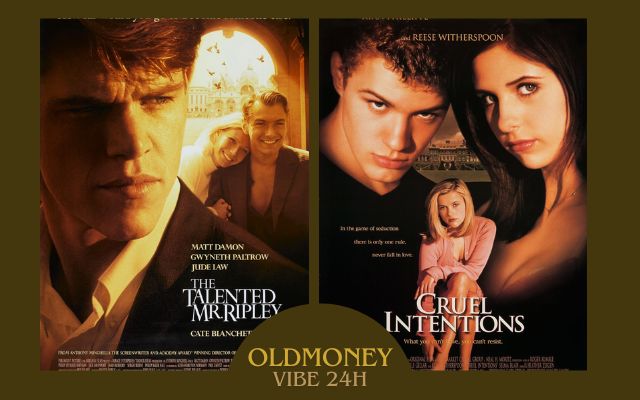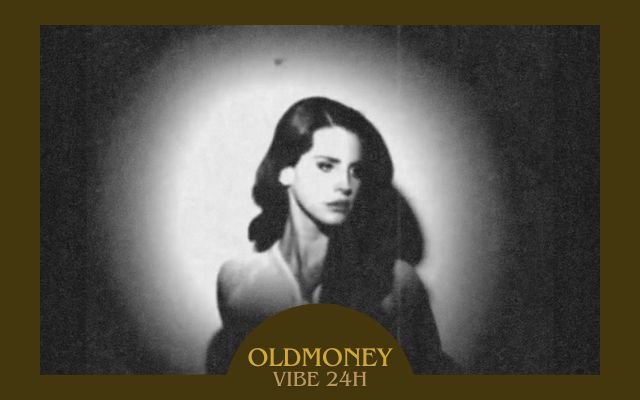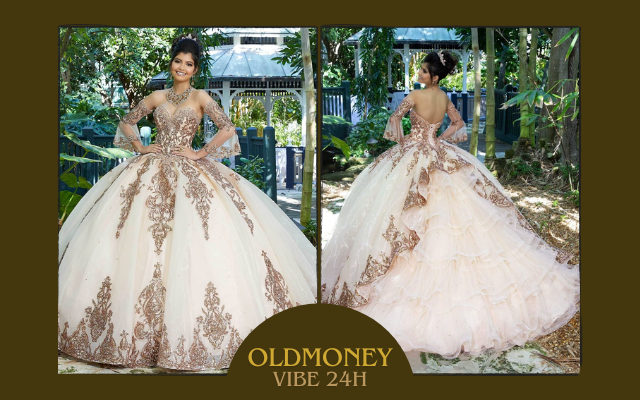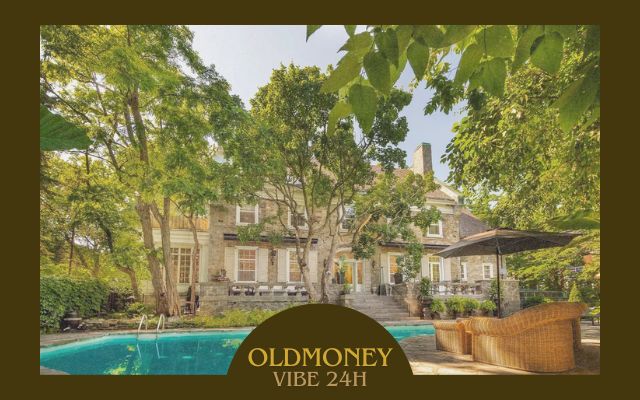Top 20 Old Money Movies & Series You MUST Watch
Old money movies and series offer a captivating glimpse into the past, making them a compelling watch for those intrigued by history and cultural evolution. They provide more than just entertainment; they immerse viewers in the lifestyles and values of bygone eras, showcasing everything from elegant fashion to grand architecture. What’s particularly fascinating is how these stories explore the complexities of inherited wealth and the societal expectations that come with it. Characters in these narratives often wrestle with the responsibilities and privileges of their status, offering deep insights into human nature and the dynamics of family legacies. Visually, these productions are stunning, with meticulous attention to detail in recreating historical settings and costumes, making the viewing experience both educational and aesthetically pleasing.
Here is our list of movies and series; we hope you enjoy them!
Movies
The Talented Mr. Ripley (1999)
“The Talented Mr. Ripley” (1999) stands out as a quintessential “old money” movie due to its vivid depiction of wealth, privilege, and the opulent lifestyle of the upper class in the 1950s. Set against the picturesque backdrops of Rome, Venice, and the Amalfi Coast, the film captures the allure of old-world luxury through meticulous attention to period details, from vintage cars and stylish clothing to upscale interiors.
The characters, particularly Dickie Greenleaf and his affluent circle, epitomize the leisurely, indulgent life of the elite, showcasing a sense of entitlement and detachment from ordinary concerns. The stark contrast between the privileged lives of these characters and Tom Ripley’s more modest background underscores themes of class and identity, with Ripley’s obsessive desire to infiltrate this world driving the plot.
Directed by Anthony Minghella and featuring a lush visual style and sophisticated soundtrack, the film’s portrayal of the seduction of wealth and status remains compelling. Its critical acclaim and nuanced performances by Matt Damon, Jude Law, and Cate Blanchett contribute to its lasting appeal as a profound exploration of ambition, deception, and the timeless allure of old money.
Cruel Intentions (1999)
“Cruel Intentions” (1999) stands out as a quintessential “old money” movie due to its vivid depiction of wealth, privilege, and the manipulative games played by the elite youth of Manhattan. Set in the upscale neighborhoods of New York City, the film showcases luxurious penthouses, elite prep schools, and the lavish lifestyles of characters like Sebastian Valmont and Kathryn Merteuil, who epitomize the entitled, indulgent youth of old money families.
The plot revolves around their manipulative power struggles, reflecting the ruthless use of social standing and financial influence typical of old money narratives. The film’s sophisticated, polished aesthetic, with elegant costumes and stylish settings, enhances its portrayal of an opulent and morally ambiguous world. Through its exploration of wealth, power, and manipulation within elite circles, “Cruel Intentions” provides a compelling and darkly humorous look at the lives of the privileged few, making it a standout in the genre.
The Great Gatsby (1974 and 2013 versions)
“The Great Gatsby,” with notable film adaptations in 1974 and 2013, effectively captures the essence of “old money” society, each in its unique style. The 1974 version, directed by Jack Clayton and starring Robert Redford and Mia Farrow, is celebrated for its period authenticity and restrained elegance, staying close to F. Scott Fitzgerald’s narrative. In contrast, Baz Luhrmann’s 2013 version, starring Leonardo DiCaprio and Carey Mulligan, is known for its vibrant, extravagant visuals and modern soundtrack, emphasizing the opulence and hedonism of the Roaring Twenties.
Both adaptations explore themes of wealth, class, and the American Dream, contrasting the “old money” of East Egg with the “new money” of West Egg. They showcase grandiose mansions, lavish parties, and the luxurious lifestyles of the 1920s elite, critiquing the notion that wealth can buy happiness and social acceptance. The complex relationships between the characters reveal the moral ambiguities and superficiality of the upper class, making “The Great Gatsby” a timeless critique of the American Dream and the realities behind the glittering facade of wealth.
The Philadelphia Story (1940)
“The Philadelphia Story” (1940) is a quintessential old money movie that offers a witty and insightful look into the lives of the American upper class. Directed by George Cukor and starring Katharine Hepburn, Cary Grant, and James Stewart, the film is set in the luxurious estate of the Lord family in Philadelphia, epitomizing old money elegance.
The story follows socialite Tracy Lord as she navigates the complexities of her second marriage, the return of her ex-husband, and the arrival of tabloid journalists. The film explores themes of wealth, privilege, and social class through Tracy’s personal transformation and her interactions with characters from different social backgrounds. It critiques the superficiality of the upper class while celebrating their charm, highlighted by sharp dialogue, sophisticated humor, and stylish direction. “The Philadelphia Story” remains a timeless examination of the complexities and charms of life among the wealthy elite.
Gosford Park (2001)
“Gosford Park” (2001), directed by Robert Altman and written by Julian Fellowes, intricately explores the world of English aristocracy in the early 20th century, making it a standout old money movie. Set at the lavish Gosford Park estate in 1932, owned by Sir William McCordle (Michael Gambon), the film immerses viewers in a microcosm of wealth and privilege. It meticulously portrays the rituals and opulence of the upper class through elaborate dinners, social gatherings, and the intricate relationships between aristocrats and their servants.
The ensemble cast, including Maggie Smith, Helen Mirren, and Alan Bates, brilliantly depicts characters from different social strata, revealing the complex power dynamics and hidden tensions within the estate. “Gosford Park” cleverly uses a murder mystery plot to unravel the facade of civility and expose the moral ambiguities and secrets that underpin the aristocratic facade.
Altman’s direction, with his trademark overlapping dialogue and sprawling narrative, enhances the film’s portrayal of the estate as both a symbol of grandeur and a stage for simmering conflicts. Through its rich storytelling and sharp social commentary, “Gosford Park” offers a compelling exploration of wealth, class, and societal norms during a transformative period in British history, solidifying its place as a captivating old money movie.
The Age of Innocence (1993)
“The Age of Innocence” (1993), directed by Martin Scorsese and based on Edith Wharton’s novel, delves deeply into the intricacies of New York’s upper class during the Gilded Age. Set in the 1870s, the film follows Newland Archer (Daniel Day-Lewis), a young lawyer engaged to May Welland (Winona Ryder), as their lives are disrupted by the arrival of May’s cousin, Countess Ellen Olenska (Michelle Pfeiffer). Ellen, fleeing a troubled marriage in Europe, captivates Newland with her independence and defiance of societal norms.
Their growing attraction forces them to confront the rigid expectations and moral codes of their social circle, where appearances and reputation hold utmost importance. Scorsese’s direction vividly captures the opulence and formality of the era through lush cinematography and meticulous period details.
The film explores themes of conformity versus individuality, tradition versus change, and the complexities of forbidden love amidst a backdrop of longing glances and subtle gestures. “The Age of Innocence” received acclaim for its evocative portrayal of a bygone era and remains a poignant reflection on love, duty, and the constraints of societal expectations.
Rebecca (1940)
Alfred Hitchcock’s “Rebecca” (1940), based on Daphne du Maurier’s novel, transcends a typical “old money” movie. Sure, it portrays the lavish world of the aristocracy through the opulent estate of Manderley. Grand interiors and sprawling grounds become a character themselves, highlighting the vast gulf between the de Winters and their servants. But “Rebecca” is more than just a display of wealth.
The characters themselves are captivating. The brooding Maxim de Winter, his insecure new wife, and the domineering Mrs. Danvers embody the complexities and tensions of high society. The film weaves a gothic tale of mystery and obsession around the deceased Rebecca, adding depth and intrigue.
Hitchcock’s masterful direction, combined with atmospheric visuals and meticulous set design, elevates “Rebecca” into a timeless classic. It’s not just about inherited wealth and social norms; it’s a psychological exploration of a troubled world hidden beneath a veneer of privilege. “Rebecca” continues to captivate audiences with its nuanced portrayal of the aristocratic elite, their secrets, and the darkness that can lurk within a seemingly perfect life.
The Aviator (2004)
Martin Scorsese’s “The Aviator” (2004) transcends the label of a mere “old money” movie. Yes, it depicts the extravagant lifestyle of Howard Hughes (Leonardo DiCaprio), a real-life billionaire who ruled the skies and Hollywood during the early 20th century. But wealth is just the backdrop for a more profound story.
The film chronicles Hughes’ meteoric rise as an aviator, filmmaker, and industrialist. We witness his obsession with pushing boundaries, from designing revolutionary aircraft to influencing Hollywood with his production company. Scorsese masterfully portrays Hughes’ ambition, capturing not just the glamorous hobnobbing with stars like Katharine Hepburn (Cate Blanchett) and Ava Gardner (Kate Beckinsale), but also the meticulous engineering feats and boardroom battles.
“The Aviator” doesn’t shy away from the darker side of wealth and ambition. Hughes’ struggle with OCD adds a layer of vulnerability to his larger-than-life persona. We see the toll his relentless pursuit takes on his relationships and mental health.
Scorsese’s signature style shines through with sweeping cinematography and meticulous period details. He paints a vivid picture of Hughes’ world, a world of breathtaking grandeur, unchecked ambition, and the hidden costs of chasing a dream. Ultimately, “The Aviator” is a captivating story about the human cost of chasing power and the struggle to maintain control when ambition and obsession collide.
Atonement (2007)
Joe Wright’s “Atonement” (2007) transcends the label of a simple “old money” movie. Sure, it showcases the opulent world of the Tallis family, a wealthy British household on the cusp of World War II. But the true story lies beneath the polished exterior.
The film hinges on a young Briony Tallis (Saoirse Ronan) misinterpreting a pivotal moment between her sister Cecilia (Keira Knightley) and Robbie Turner (James McAvoy), the son of their housekeeper. Briony’s sheltered upbringing and misplaced jealousy lead to a devastating lie, altering the course of all their lives.
“Atonement” isn’t just about a grand estate and lavish parties. The meticulously recreated setting emphasizes the vast divide between the Tallis family and their servants. It explores how wealth and social standing warp perception and influence decisions. Briony’s actions become a stark reminder of the consequences of privilege and the limitations of a cloistered life.
The film delves into complex moral questions. Guilt, redemption, and the weight of past mistakes resonate deeply. We see how those shielded by wealth and status grapple with responsibility and the impossibility of erasing the damage caused.
Director Joe Wright masterfully uses visuals to enhance the narrative. Sweeping cinematography paints a beautiful yet unsettling picture of the Tallis world. The film’s power lies in its exploration of privilege, the warping influence of social hierarchy, and the enduring consequences faced by those who live within its confines.
The Wolf of Wall Street (2013)
“The Wolf of Wall Street” (2013) is a biographical black comedy directed by Martin Scorsese, based on the memoir of Jordan Belfort. The film stars Leonardo DiCaprio as Belfort, showcasing his rise and fall as a stockbroker involved in rampant corruption and fraud on Wall Street during the 1990s.
The movie is notable for its energetic depiction of the excessive lifestyle, moral decay, and white-collar crime associated with Belfort’s success. Although “The Wolf of Wall Street” is not about “old money” in the traditional sense-wealth that is inherited and passed down through generations-it can be considered an “old money” movie in the sense that it critically examines the established financial systems and the lengths individuals go to exploit them. It contrasts the nouveau riche culture of quick wealth accumulation with the longstanding, often corrupt institutions of Wall Street.
TV Series
Downton Abbey (2010-2015)
“Downton Abbey” (2010-2015) is a British historical drama television series created by Julian Fellowes. Set in the early 20th century, it follows the lives of the aristocratic Crawley family and their domestic servants on the fictional Yorkshire estate of Downton Abbey. The series explores significant events such as the sinking of the Titanic, World War I, and the Spanish flu pandemic, reflecting their impact on British society and class structure. Known for its detailed period settings, complex characters, and social commentary, “Downton Abbey” received widespread acclaim and numerous awards.
The Crown (2016-present)
“The Crown” is a critically acclaimed British-American historical drama series created by Peter Morgan. It premiered in 2016 and is produced by Left Bank Pictures for Netflix. The series explores the reign of Queen Elizabeth II and the events that have shaped the second half of the 20th century and beyond.
Each season typically covers a decade or a significant period in the Queen’s life, beginning with her early reign in the 1950s. “The Crown” delves into the personal intrigues, political rivalries, and major events of each era, providing a nuanced portrayal of the Queen’s life and the challenges faced by the British monarchy. The show is known for its meticulous attention to historical detail, elaborate costumes, and impressive production values.
It has received praise for its writing, acting performances (including Claire Foy and Olivia Colman as Queen Elizabeth II in different seasons), and its exploration of broader themes such as duty, family, and the evolving role of the monarchy in a changing world. As of now, “The Crown” continues to be produced, with new seasons covering later periods of Queen Elizabeth II’s reign and introducing new actors to portray older versions of the characters as time progresses.
Gossip Girl (2007-2012)
“Gossip Girl” is a teen drama series that aired from 2007 to 2012, based on Cecily von Ziegesar’s book series. Set in Manhattan’s Upper East Side, it follows the lives of wealthy teenagers and their scandals, narrated by the anonymous blogger “Gossip Girl” (voiced by Kristen Bell). The show explores themes of privilege, relationships, and social intrigue, becoming a cultural phenomenon during its six-season run.
Succession (2018-present)
“Succession” is an American satirical drama television series created by Jesse Armstrong. It premiered in 2018 on HBO and continues to air, receiving critical acclaim and a dedicated following. The series revolves around the Roy family, owners of a global media conglomerate, and their internal power struggles as they vie for control of the company founded by their aging patriarch, Logan Roy.
The central characters include Logan Roy (played by Brian Cox), the domineering and unpredictable family patriarch; Kendall Roy (played by Jeremy Strong), his ambitious and troubled son; Shiv Roy (played by Sarah Snook), Logan’s politically savvy daughter; Roman Roy (played by Kieran Culkin), the sarcastic and rebellious youngest son; and other members of the Roy family and their inner circle. “Succession” is known for its sharp writing, complex characters, and dark humor, exploring themes of family dynamics, corporate intrigue, and the ethical dilemmas faced by the ultra-wealthy.
The show portrays the ruthless nature of business and the personal sacrifices made in pursuit of power and success within a wealthy and influential family. The series has received numerous awards and nominations, particularly for its writing, acting performances, and its portrayal of the complexities of modern-day corporate America.
The Gilded Age (2022-present)
“The Gilded Age” is a historical drama series created by Julian Fellowes, premiering in 2022 on HBO. Set in late 19th-century New York City, it follows the lives of the wealthy elite and emerging middle class during a period of rapid industrial growth and social change. The show explores themes of ambition, class struggle, and societal transformation against the backdrop of the Gilded Age’s opulence and disparities.
Brideshead Revisited (1981 and 2008 versions)
“Brideshead Revisited” is a novel by Evelyn Waugh that has been adapted into television and film. The 1981 television series, directed by Charles Sturridge and Michael Lindsay-Hogg, is a faithful adaptation set in the interwar period. It stars Jeremy Irons as Charles Ryder, who befriends the aristocratic Flyte family and becomes entangled in their lives and struggles with faith.
The 2008 film adaptation, directed by Julian Jarrold, condenses the story into a feature film format. It stars Matthew Goode as Charles Ryder and focuses more on the romantic and personal aspects of the story while retaining the themes of class, religion, and nostalgia. Both adaptations are praised for their performances and visual appeal, though the 1981 series is often considered the definitive adaptation for its thorough exploration of Waugh’s themes and characters.
Revenge (2011-2015)
“Revenge” is an American television drama series that aired from 2011 to 2015 on ABC. Created by Mike Kelley, the show revolves around Emily Thorne (played by Emily VanCamp), who seeks vengeance against the wealthy Grayson family for framing her father for a crime he did not commit.
Set in the Hamptons, the series blends elements of mystery, drama, and romance as Emily navigates intricate plots and alliances to achieve her goal of destroying those who wronged her family. “Revenge” garnered a dedicated fanbase for its suspenseful storytelling, complex characters, and dramatic twists throughout its four-season run.
Billions (2016-present)
“Billions” is an American television drama series that premiered in 2016 on Showtime and continues to air. Created by Brian Koppelman, David Levien, and Andrew Ross Sorkin, the series revolves around the power dynamics between two ambitious figures: Chuck Rhoades (played by Paul Giamatti), a U.S.
Attorney for the Southern District of New York, and Bobby Axelrod (played by Damian Lewis), a hedge fund manager. The show explores themes of wealth, politics, ambition, and moral ambiguity as these characters engage in a high-stakes battle of wits and influence. “Billions” is known for its sharp writing, intense performances, and intricate portrayal of the world of finance and law enforcement.
Dynasty (2017-present)
“Dynasty” is a modern reboot of the classic 1980s soap opera of the same name. Premiering in 2017 on The CW, the series follows the Carrington family, a wealthy and powerful dynasty based in Atlanta, Georgia. The show centers around the rivalry and drama between heiress Fallon Carrington (played by Elizabeth Gillies) and her stepmother Cristal (played by Nathalie Kelley), as they vie for control of the family’s business empire and navigate personal relationships.
“Dynasty” is known for its glamorous portrayal of wealth, power struggles, and intricate family dynamics, appealing to audiences with its blend of drama, romance, and intrigue.
The White Lotus (2021-present)
“The White Lotus” is a satirical comedy-drama series created by Mike White, which premiered in 2021 on HBO. The show is set at a luxury resort in Hawaii and follows the lives of the guests and staff over the course of a week. It explores themes of privilege, wealth, entitlement, and societal issues through the interactions and conflicts that arise among the diverse group of characters.
“The White Lotus” has received acclaim for its sharp writing, ensemble cast performances, and its critique of contemporary social dynamics and class distinctions in a vacation paradise setting.
However, this list includes quite old movies. If you prefer newer movies, stay tuned for our next article.







